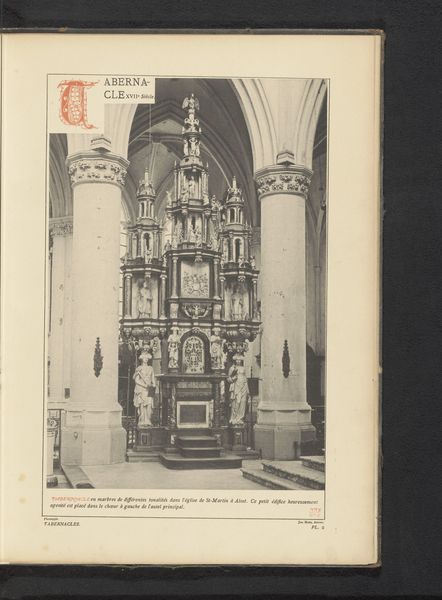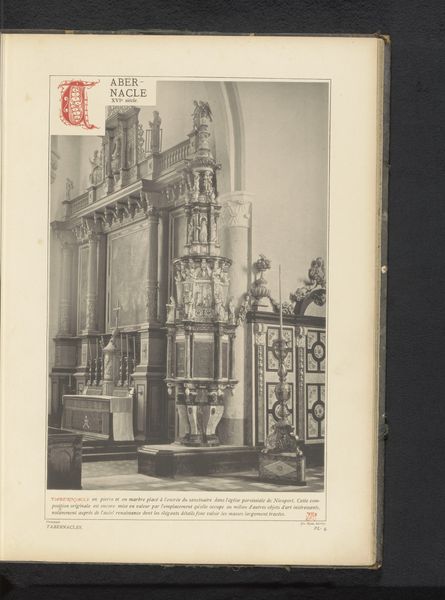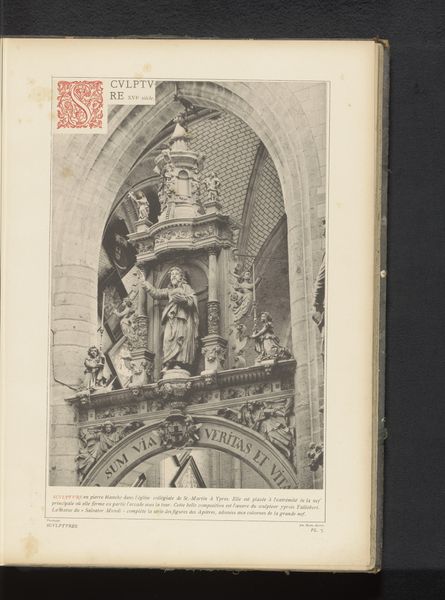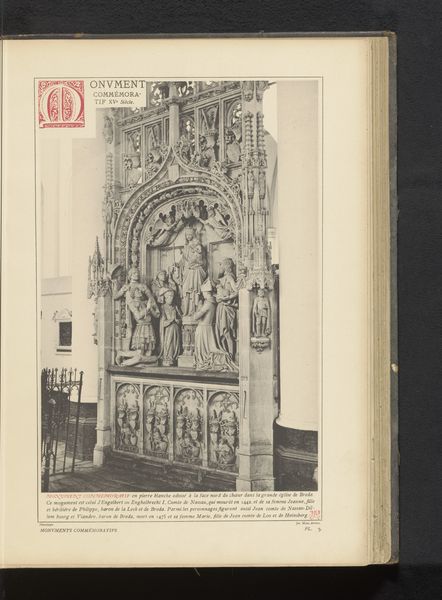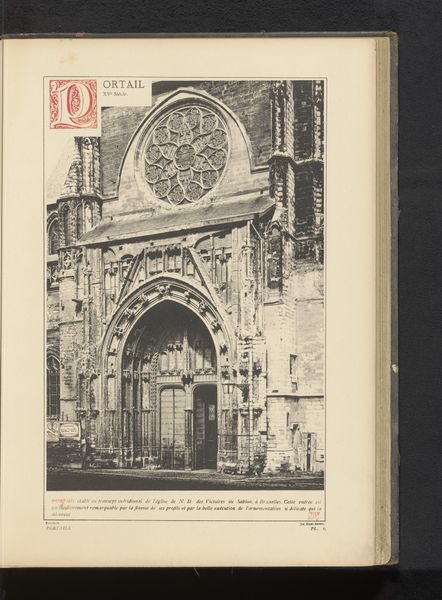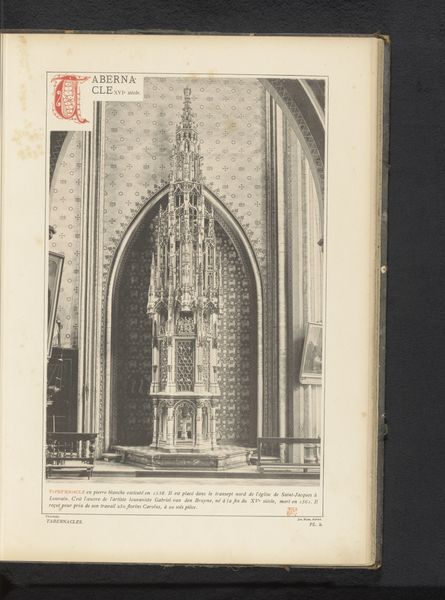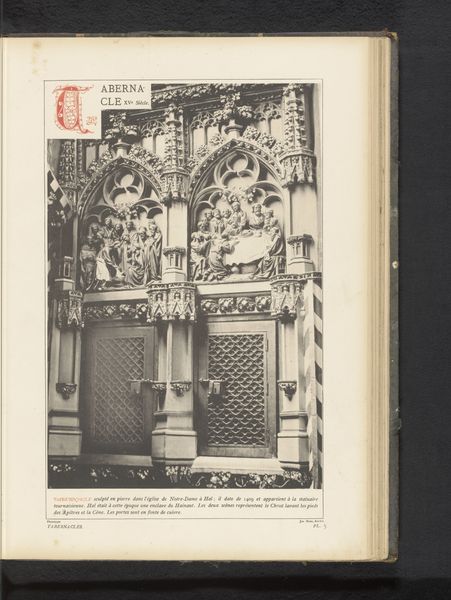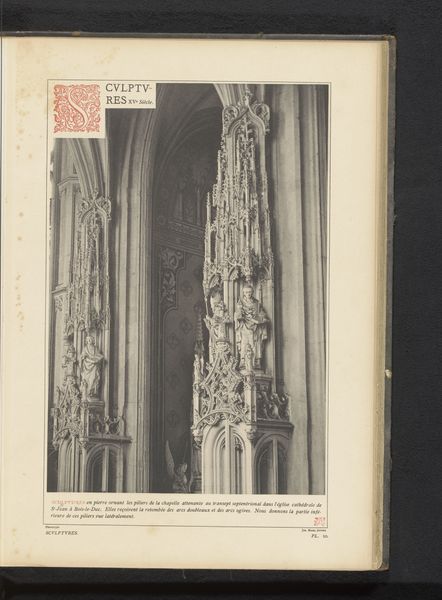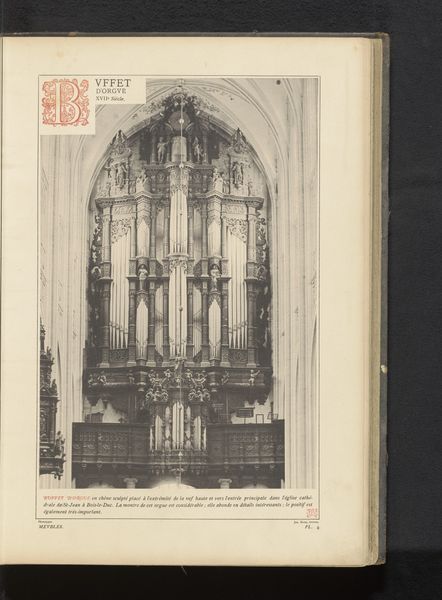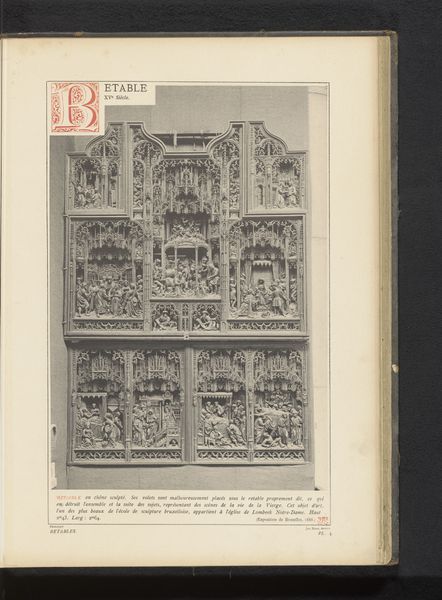
#
aged paper
#
homemade paper
#
paper non-digital material
#
paperlike
#
sketch book
#
personal journal design
#
personal sketchbook
#
folded paper
#
letter paper
#
paper medium
Dimensions: height 339 mm, width 229 mm
Copyright: Rijks Museum: Open Domain
Editor: Here we have an image of a wooden altarpiece in the Sint-Leonarduskerk in Zoutleeuw, Belgium, created sometime before 1887. It looks incredibly intricate, almost overwhelming in its detail. What stands out to you as you look at this work? Curator: Well, instantly, the layered symbolism leaps out. We have figures rendered in tiers, a visual hierarchy common in religious art to signify importance. Who stands at the top, literally and figuratively, dominating the symbolic landscape? Editor: I see the Virgin and Child at the very top. Is that a typical arrangement? Curator: Very much so. The Virgin Mary is often positioned in the highest echelon, mediating between the divine and earthly realms. Notice also the two figures flanking this central grouping – saints perhaps? What emotions do you feel they invoke? Editor: They seem very stern, almost judging. Curator: Their impassivity might signify steadfast faith, embodying moral rectitude for the viewer. Look at the lower registers – teeming with activity. Do you recognize any biblical scenes? Editor: I think I see the Crucifixion there in the middle, and maybe some scenes from the Old Testament? Curator: Precisely. The altarpiece serves as a visual encyclopedia of faith, reminding the congregation of their shared cultural memory. How do you think its original audience experienced this artwork? Editor: I imagine they found comfort in the familiar stories, and a sense of awe at the skill of the artist. Curator: Indeed. And maybe a little intimidated by the weight of tradition. It’s remarkable how effectively these symbols work together to inspire devotion, even across centuries. Editor: It really is. I’ve learned a lot about how images can be so much more than just what’s on the surface.
Comments
No comments
Be the first to comment and join the conversation on the ultimate creative platform.


